 Online Since 2001
Online Since 2001
 Online Chat
Online Chat
 Order Before 1pm, DPD Next Day Delivery
Order Before 1pm, DPD Next Day Delivery
 Online Since 2001
Online Since 2001
 Online Chat
Online Chat
 Order Before 1pm, DPD Next Day Delivery
Order Before 1pm, DPD Next Day Delivery

Whether your a first time buyer for a Ski Touring Avalanche Airbag or a avid ski tourer looking to upgrade to something new, searching the internet for a ski touring avalanche airbag can be a bit of a mind field due to the various systems, volumes, features and more.
Snowsafe break down what a good Ski Touring Airbag should consist of:
Being the main component of any pack, you should choose a system that offers at least a 150 litre Airbag, you can find these in most modern brands system such as the Jetforce, Alpride E2 or LiTRIC, these are Made of a durable, tear-resistant fabric. When deployed, the airbag inflates rapidly in under 3.5 seconds increasing their buoyancy in an avalanche and helping the victim to stay near the surface of the snowpack.
The Deployment system:
This is the mechanism that triggers the inflation of the airbag. There are two main types of deployment systems:
Electronic system: In the last 5 seasons we have seen this market evolve, with a few different types of electronic airbag systems from brands such as Black Diamond, Ortovox and Alpride
These brands use a battery-powered fan and super capacitors to inflate the airbag, they are reusable and can be inflated multiple times meaning you can do multiple practice runs on a single charge, see blogs below for each system:
they come at more of a cost and weight then the canister powered packs, however they are hassle-free to travel with and you can practice with the packs as much as you like.
Cartridge system: Uses a compressed air canister to inflate the airbag. These systems are generally lighter and more affordable, but they require purchasing and carrying replacement cartridges, which the airlines do not favour, Canister systems are a thing of the past for snowsafe, we no longer sell any since the market evolved to electronic.
Volume:
Every good ski touring backpack has to have good volume, you should be aiming for a backpack which offers at least a 28 to 40 litres.
Whether its single day tours or over night tours like the Haute Route you are doing you will always pack a lot of ski touring essentials such as:
Modular and removable airbags from the backpack
Both the Jetforce and Ortovox LITRIC works off a modular zip on based pack, similar to the old ABS airbag systems, where by you can obtain zip ons to go onto the base unit, this is great if you are just day touring or then decide you need more volume for over night tours.
The Jetforce highest capacity is the Jetforce Pro 35 Litres
The Ortovox LITRIC ranges from 28 to 40 litres, Tour 28, Tour 30, Tour 36 S, Tour 40
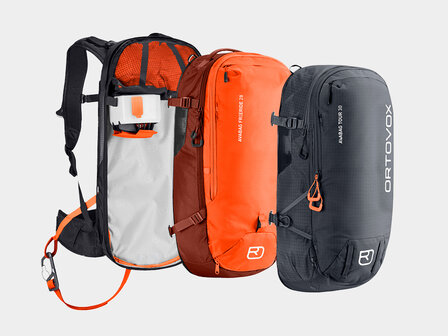
Alpride E2 Airbag collaborate with many known brands on the market such as Scott, BCA, Deuter, Osprey and ABS, the system is removable from the backpack, meaning, if you got a Scott Backcountry Patrol 30 Litre volume touring bag and you decided after your first tour that its not enough room then you can buy a bag which is higher in volume such as the Scott Backcountry Patrol 38 to insert the Airbag into.
Carrying system
A pack which offers a good carry system is a must, ensure the pack has a good set of shoulder straps and a hip belt, this will allow the pack to distribute the weight whilst you are ascending across the mountain.
This also helps give you complete freedom of movement when you are descending the mountain to.
Packs that don’t offer a good shoulder strap or hip belt can often cause issues during the middle of your tour, leading you to fatigue early on as the load on your back is not distributing the weight. It can also leave you feeling unbalanced when skiing which could cause a injury.
Back system
Choose a pack which has a ventilated back panel, every good airbag backpack will come with this, this reduces body heat and moisture building up between your back and the backpack, it allows you to stay cool during the tour, last thing you want to do is keep stopping to take off your bag, especially in or around avalanche prone areas.
Touring Features
Now we have got the volume, carry and back system out the way, you now need to focus on a good set ski touring features.
1. Avalanche Safety Compartment – Every Airbag backpack comes with its own dedicated Safety compartment for your Shovel, Probe and any more safety tools you take on your tour, this needs to be easily accessible in the case of a Avalanche.
You wouldn’t believe how many people ask us “do we put our Transceiver in this dedicated compartment when skiing”! the Answer is No, this must be warn in its carry harness on the outside of your ski jacket so you can access quickly.
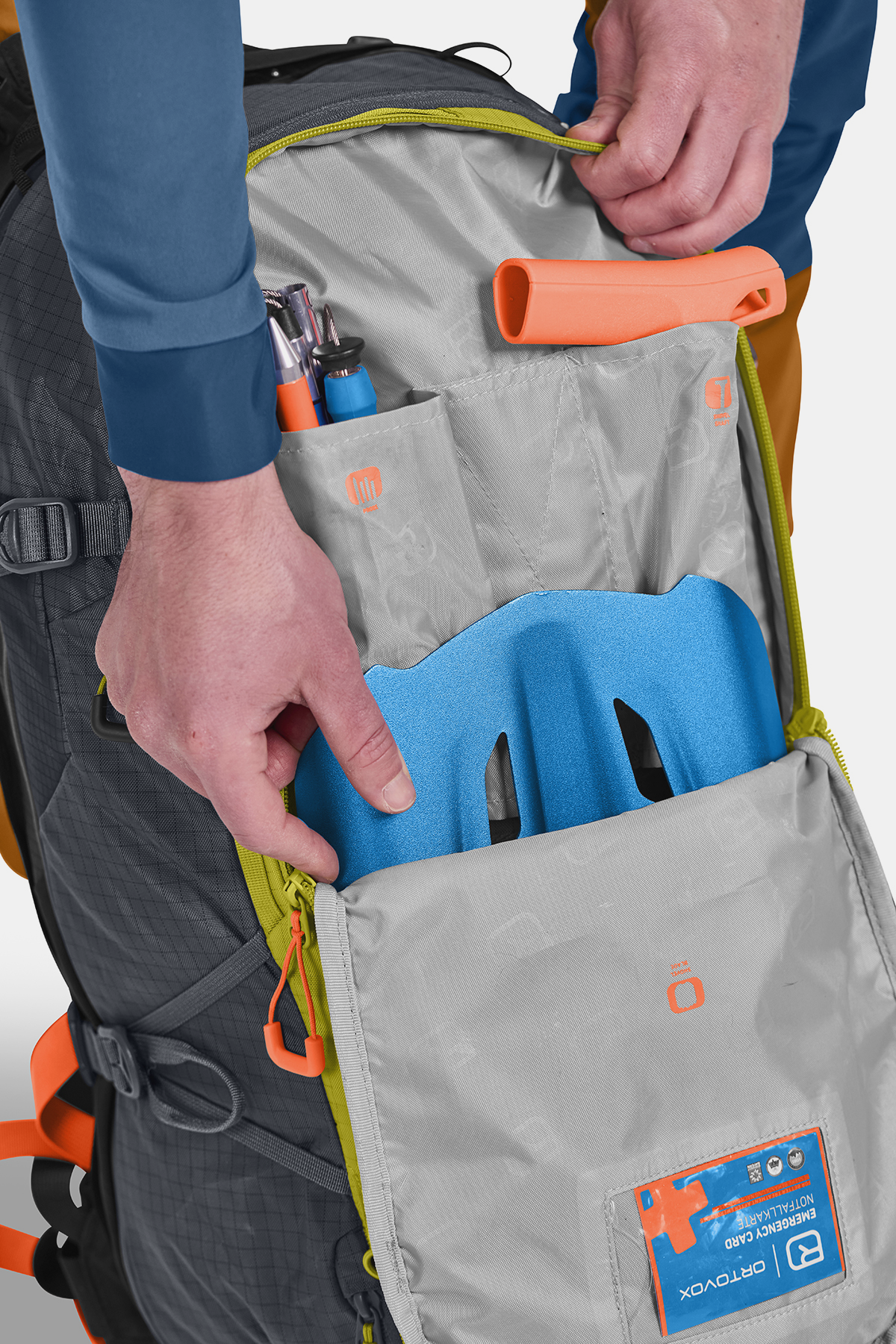
2. Hydration compatible – Staying hydrated is key so this will allow you to stay hydrated throughout your tour, Now, a question always asked is “what about water combined with electric airbags”, to date the Alpride compatible bags and Jetforce don’t hold the hydration system function, however Ortovox LITRIC have made there packs compatible for this without any problems, the tube feeds on the outside shoulder strap.
3. Diagonal Ski Carry: If your Ski Touring or Split boarding and on the final stages of your tour where it consists of a short climb before descending the mountain then you need a space for your skis to go, all airbags on the market offer a Diagonal Ski Carry system which sits across the front of your backpack.
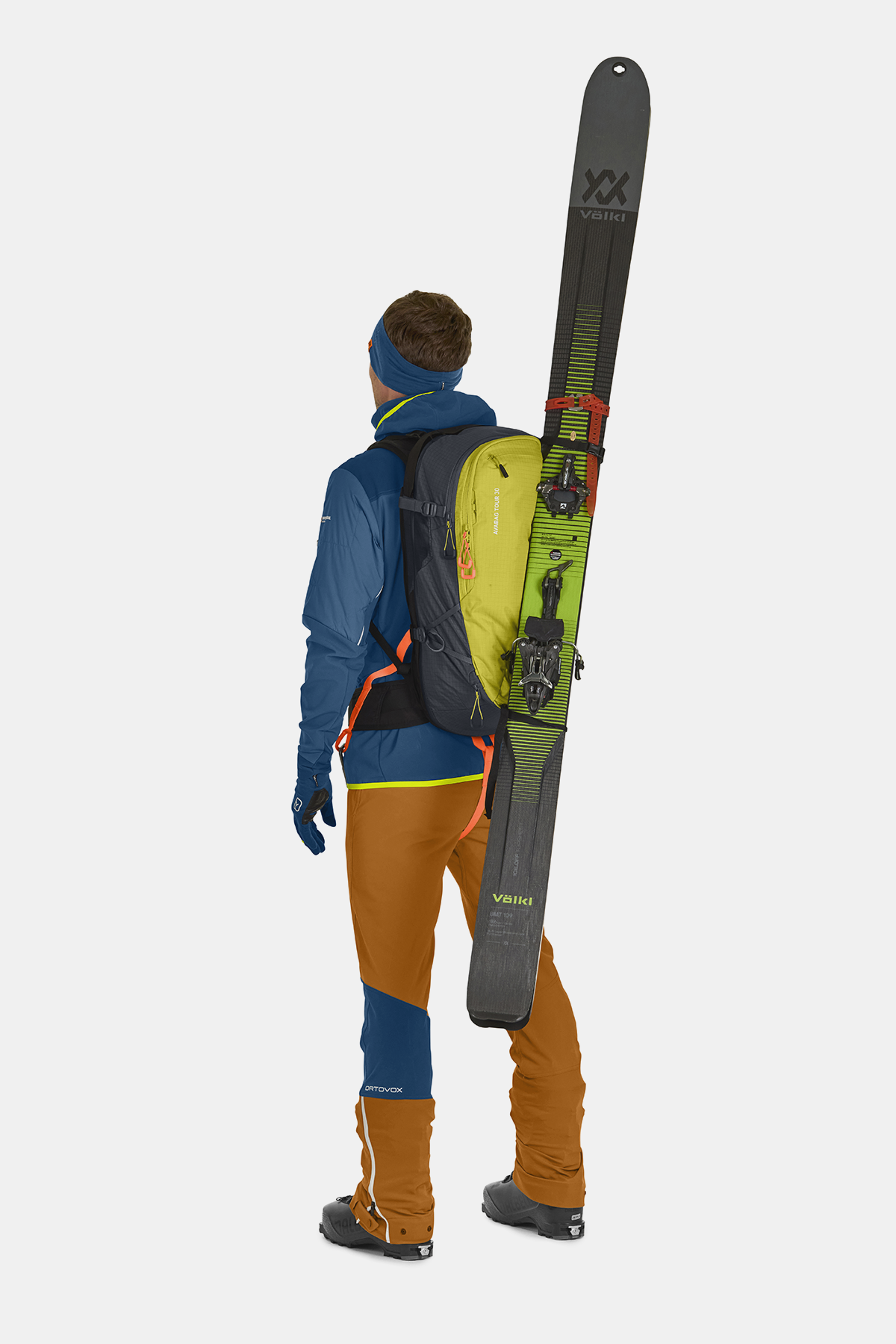
Evidently none offer A-Frame ski Carry as this would interfere with the deployment of the Airbag system due to the skis being on the sides and top where the airbag need to deploy from.
4. Helmet holder: When your Ascending across the mountain when ski touring you often dont need your helmet on so a good place to hold it makes sense, All airbag compatible backpacks offer a secure helmet net, this sits on the outside of your pack.
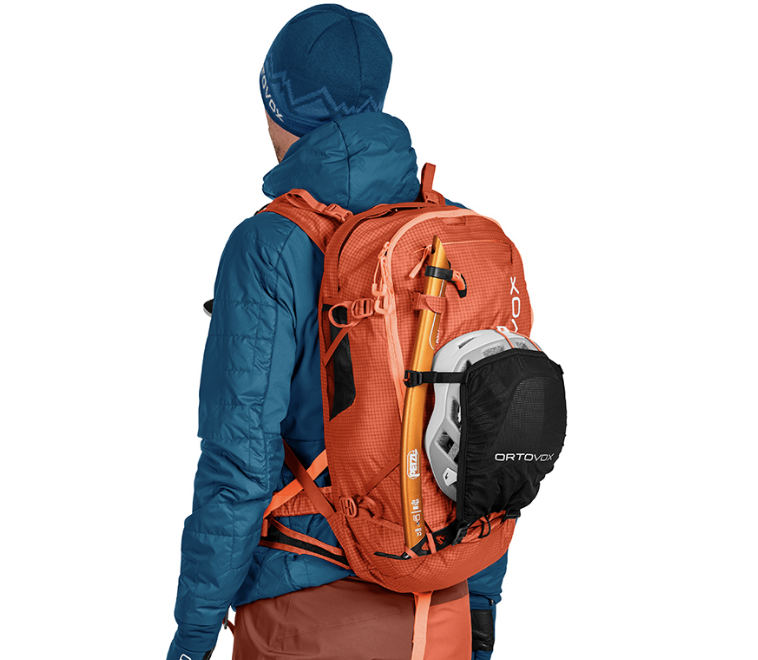
5. Ice Axe Loops (daisy chains): Every Ski Touring pack offer daisy chains where you can store your ice axe to the front of your pack, easily accessible if you need it for a steep climb up.
what about water combined with electric airbags”, to date the Alpride compatible bags and Jetforce don’t hold the hydration system function, however Ortovox LITRIC have made there packs compatible for this without any problems, the tube feeds on the outside shoulder strap.
6. Hip Pockets: You can never go wrong with a good set of hip belt pockets to store your essentials such as a your mobile phone, map, compass and more.
This will stop you having to take off your pack to access a item you need.
7. Leg Loop: Every good avalanche airbag will include a Leg Loop with a strong clasp or fastener system so that in the event of an avalanche the airbag is not ripped off of your back, with ski touring this is a important feature as you are in different mountain terrains where avalanche can happen.
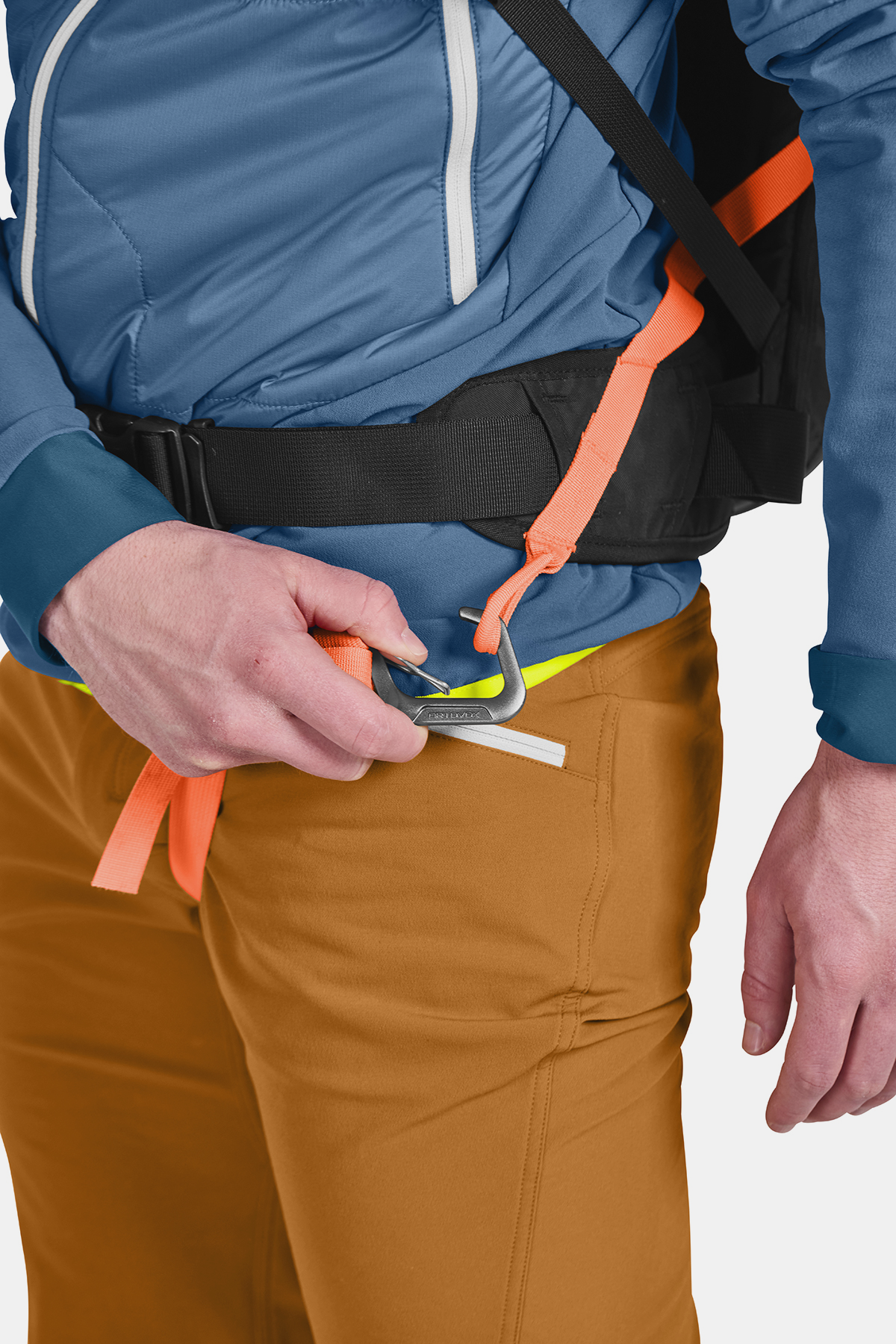
We hope this article gave you a breakdown of the type of Ski Touring pack you should go for, the difference in the airbag types, volumes, features and more, remember its always better to buy a bag with larger volume which you can compress down, rather then buying a bag and having it stuffed to the seams where none of your equipment is easily accessible.
on another note make sure you have comprehensive Ski Touring and Off-piste Travel Insurance before you head to the mountains.
It’s important to stay safe and have the correct training when skiing or snowboarding off-piste please check out further blogs below:
If you would like to feature a blog about your organization or experience in the snow please feel free to contact us at info@snowsafe.co.uk or 01273 003 925. We are happy to take guest blogs linking back to your website.